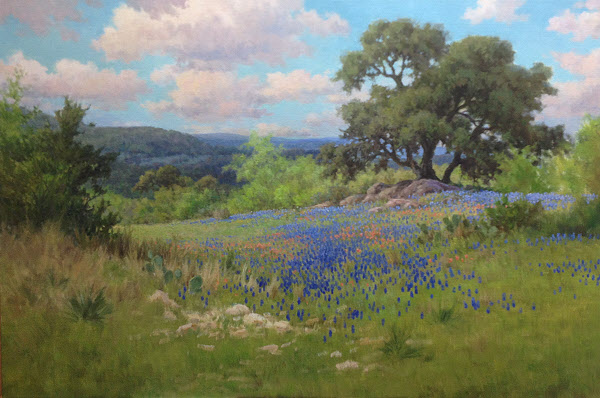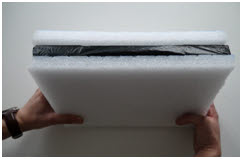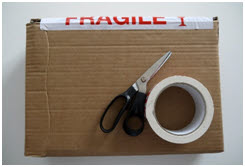In this post I’d like to share with you, how to draw an oak tree video. When taking painting lessons, many years ago, the instructor shared an approach which has been of great value not only to myself, but to other art students in drawing trees. I’m now sharing this beneficial art tip.
Seeing Shape and Form in Drawing an Oak Tree
A tree is recognized by its shape or silhouette. What gives a shape it’s dimension is through the use of light and dark values, which describe the form of the shape. This video will show you how to use an HB, 3B and 6B graphite pencil to compose a convincing tree form. In this instance a personal favorite. The mighty live oak!
Hope you enjoyed this How to Draw an Oak Tree Video!
You might also like this blog post on How to Paint a Tree. If interested in joining my Zoom art class, please contact me.
Here is the Video Transcript on How to Draw an Oak Tree
Note: The transcript sounds a little weird if you don’t watch the video. 🙂
Hello. William Hagerman here, I’m going to share with you a little bit of a tip that I learned many years ago from my own art instructor about drawing trees, some things that helped me be able to compose.
I have laid out here my HB pencil, a 3B and a 6B hard graphite pencil. This represents what will be three different values. The harder the lead, the lighter the stroke appears, the softer the lead, the darker the marks will be. You could use one pencil and just through pressure and make a darker accent. But I thought I would work with these. What I learned here, this is my HB pencil is trying to design, say, an Oak tree with sort of a block, almost circular type form. For example, started doing some things like this.
Hopefully you can be able to see that. I’ll be darkening things up. But what this helps to do is I can kind of visualize areas that will sort of overlap certain areas and help me to try and draw in some sort of a silhouette here, of a larger Oak tree. So starting with, say, source of light coming in from this direction, we have this one sort of rounded, oval type of a form, and it’s going to graduate from light to dark. So I’m starting with the lighter HB pencil, using the side here, got it sharpened up, so you have a little bit of a longer lead there. And I want to come down just a little ways, and then I want to pick up the 3B pencil, which is a little bit darker. And again, it graduates from a light to middle into a dark value. So I’m going to go in here, keeping in mind the direction of where the sunlight is coming from to the side there on the left.
And then a 6B pencil, which has a darker mark, I’m going to indicate areas underneath here that represent more of the deeper parts of the tree, the shadow. And here it meets another form that’s sort of in front of it. Excuse me, just hit the camera. Sorry about that. I’m going to go back to the HB. It’s going to repeat the process again, lights coming from here, and we’re going to have sort of the lighter tone. I could probably erase that little line there but I’m not going to worry about it right now. This is not to be a finished drawing, but something to help you visualize the structure of some trees. Okay, so there’s the light. Pick up next the three B hardness graphite pencil.
And each of these kind of represent some little forms of smaller ones in the big area, kind of light, dark, like dark, and then into the deeper parts of the tree, then oops there goes the lead, pressed a little too hard. That’s okay.
Re-darkening some of this to get a little greater contrast. Now then going back again to the HB to start the process over again. Each of these clumps are going to get the same sort of process of a light, a middle value, and then a dark value.
Do this one as well, if you notice, keeping in mind the direction of the light is coming from here. So it’s catching light. But as it comes down and underneath, some of this might be getting a little darker. Again, some of the deepest part within the shadow.
Okay. So now we have a couple of areas, we can maybe divide this one larger shape, this one kind of overlaps. But I want to take this one here and this one maybe pull it down a little bit. Okay. Repeat the process, get the right pencil here, my lighter one, HB.
Then we’re going to go darker.
Switch to the darkest graphite pencil there.
Now then, this one here is sort of more because I have this one overlapping. It’s sort of sitting more up underneath all of this. So it’s not out to the front, it’s more to the back. And as a result of the lights coming from here, these clumps of foliage are going to cast its own shadow across this. So this is going to be mostly dark. So this is kind of like on the backside of the tree.
There may be a little bit of light catching through, kind of a middle value there, but for the most part, that’s on the back side of that tree. So that’s why it’s a little darker overall. Now, this is going to be another clump. I may change its direction a little bit. I say you can alter it as you go along, but again, you’re going to have the this one is sticking out a little bit in front, so we’ll have some light on it.
This one then go into the darker area. And again, because this is curving back and it’s kind of away from the light, see, it’s going to be darker. And underneath, again, we’re going to have the darker foliage.
This is a clump that’s kind of sitting off in the back. And because of all of these, it too is going to be mostly dark. So it’s not going to get the lighter, but it will get a little reflective light from the sky. So I will use the 3B pencil here, kind of represent a little lighter edge up against the sky. But for the most part, it’s all going to be in shadow. This clump here is going to be also perhaps on the back side. So it’s going to also receive some more dark, maybe quite a bit of dark under here because all this other foliage is casting a shadow.
Okay. So here I have the basic structure of tree. We can then go back in and imagine maybe some limbs, the trunk, wrap, some limbs that’s going to come down, fall down. More details, since it’s going up into the dark of the tree, the tree trunks also have to be dark because I say there’s not light, it’s more overhead. So most of the tree trunk is going to be dark because it’s underneath. Indication of some little limbs coming through, and just give a little ground line.
As you see this gives you kind of an idea of light middle, dark. It describes more of the form of the tree. Now as you go if you were painting this then you would mix up three different values of a light, middle and a dark value. So that would help you I think in being able to achieve more realism into your tree getting more shape and form so it doesn’t look flat. So I hope this little tip that helped me in visualizing many years ago from my artist you’re working with these little blocked clumps and having some overlap one another you can more easily visualize what’s in the front, what’s on the backside and it’ll help you understand your light and darks where they would possibly go.
























































